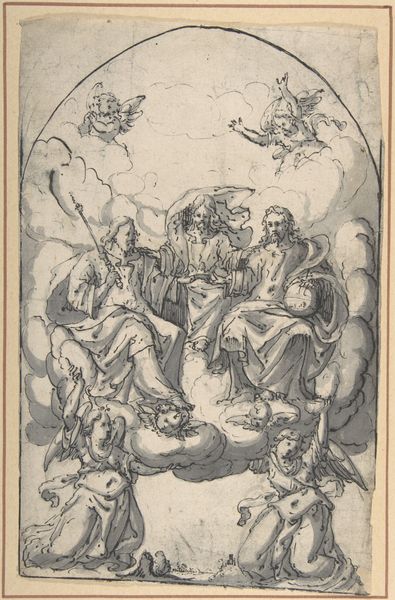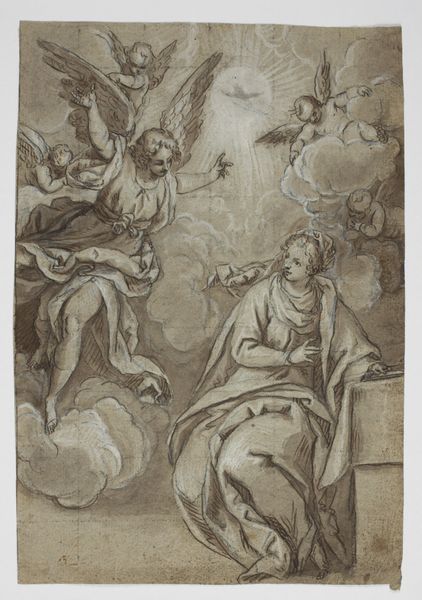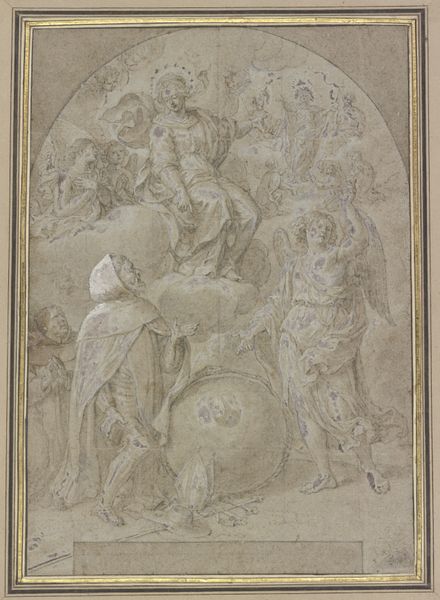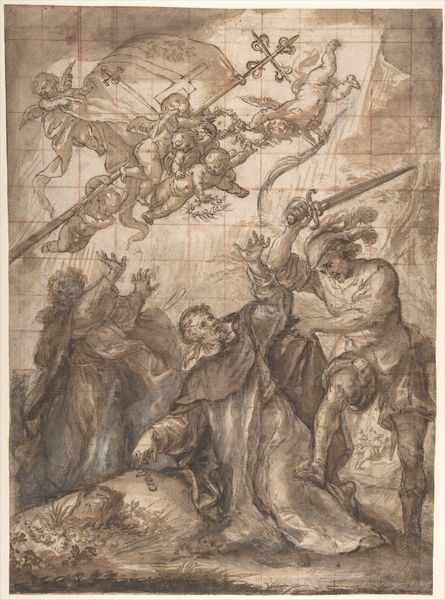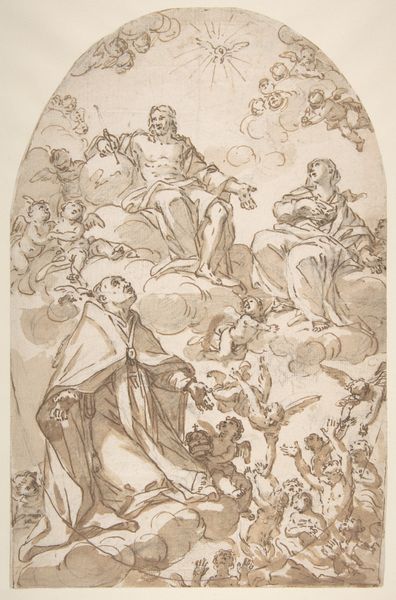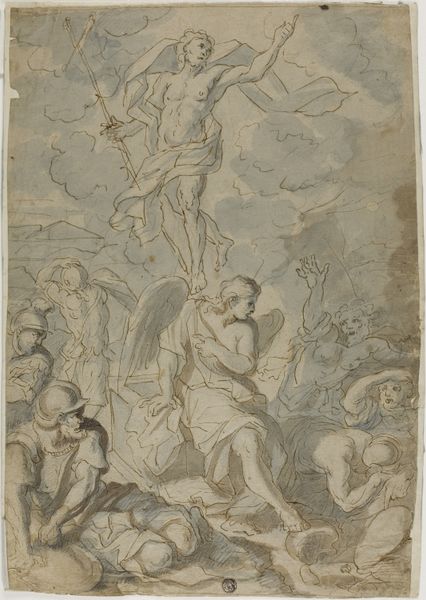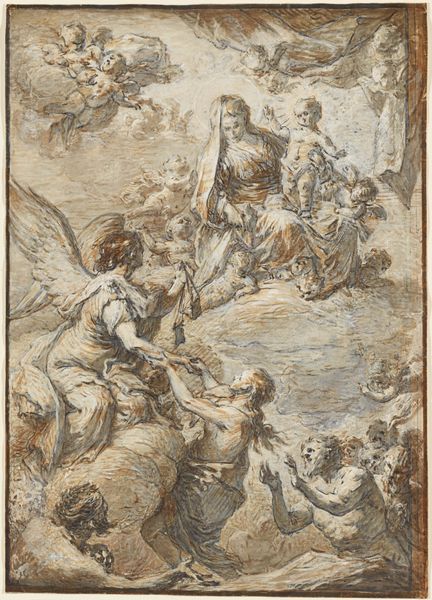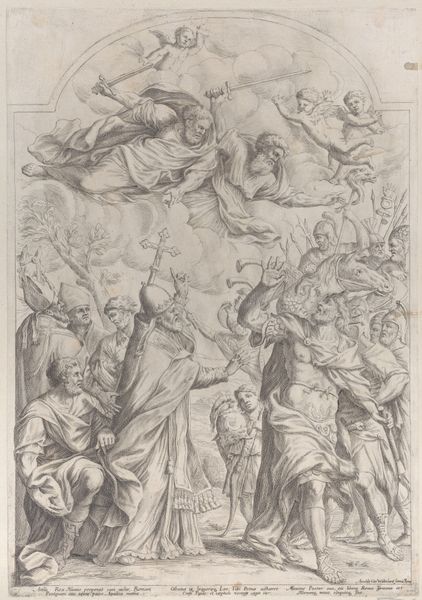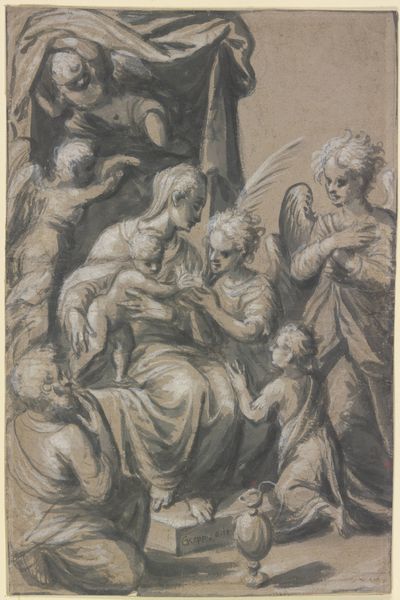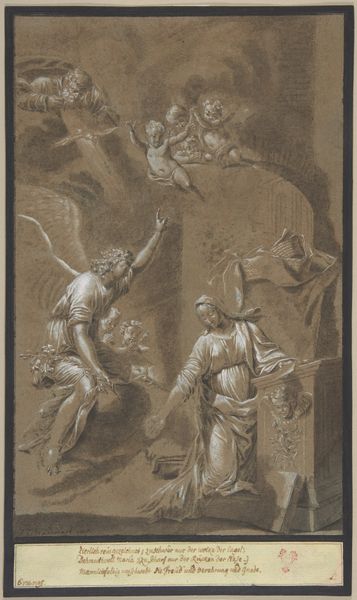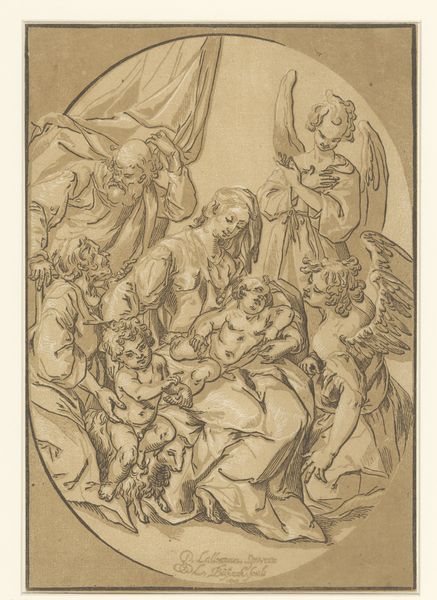
drawing, charcoal
#
drawing
#
charcoal drawing
#
figuration
#
oil painting
#
charcoal
#
history-painting
#
italian-renaissance
Dimensions: 15 7/8 x 10 1/2 in. (40.32 x 26.67 cm) (sheet)17 5/16 x 12 11/16 in. (43.97 x 32.23 cm) (mount)23 3/4 × 19 3/4 in. (60.33 × 50.17 cm) (outer frame)
Copyright: Public Domain
Denijs Calvaert created this drawing, "Death of Saint Peter Martyr," in the late 16th or early 17th century. The work encapsulates the religious fervor and violence of its time, reflecting the deep social divisions during the Counter-Reformation. The drawing depicts the assassination of Saint Peter Martyr, a Dominican friar murdered for his faith. Note how the violence of the scene is contrasted with the appearance of the Virgin Mary, holding the Christ Child, and attended by saints. The drawing stages the earthly brutality alongside divine comfort. Calvaert’s choice to depict this scene speaks to the period's emphasis on martyrdom as a powerful affirmation of religious belief. Consider how the artist uses line and composition to draw the viewer's eye, creating an emotional experience that aimed to inspire devotion and reinforce the power of the Catholic Church amidst religious conflict. The image makes visible the intersection of faith, power, and violence that shaped the cultural landscape of the time.
Comments
minneapolisinstituteofart almost 2 years ago
⋮
This lively composition clearly references Titian’s famous masterpiece Death of Saint Peter Martyr (1526–30; destroyed by fire in 1867), formerly on the high altar of Santi Giovanni e Paolo in Venice. Calvaert may have known the picture firsthand, or perhaps he worked from one of the early prints after it. While borrowing the general format and some specific poses from Titian’s work, Calvaert created something wholly original. The heavenly apparition that dominates the upper half of the drawing, with the Madonna and Child appearing amid resplendent, swirling clouds, is a signature of Calvaert’s works. He also transformed the heroic violence of Titian’s image into a scene with a dreamy quality, enhanced by the pictorial handling. Calvaert’s figures, with their delicate proportions, abundant drapery, and elegant poses, are more reminiscent of dancers in a ballet than participants in a scene of horrific brutality.
Join the conversation
Join millions of artists and users on Artera today and experience the ultimate creative platform.
